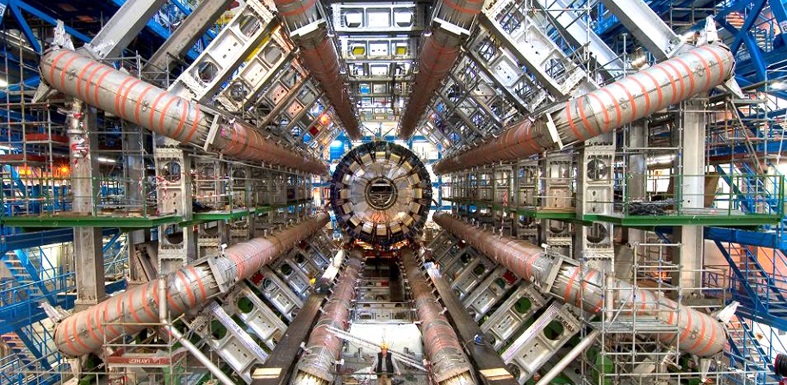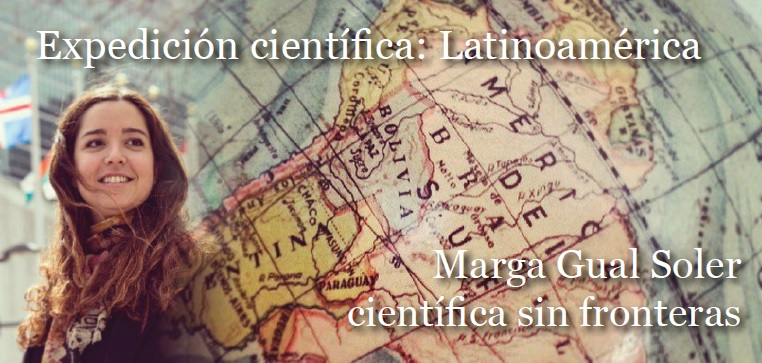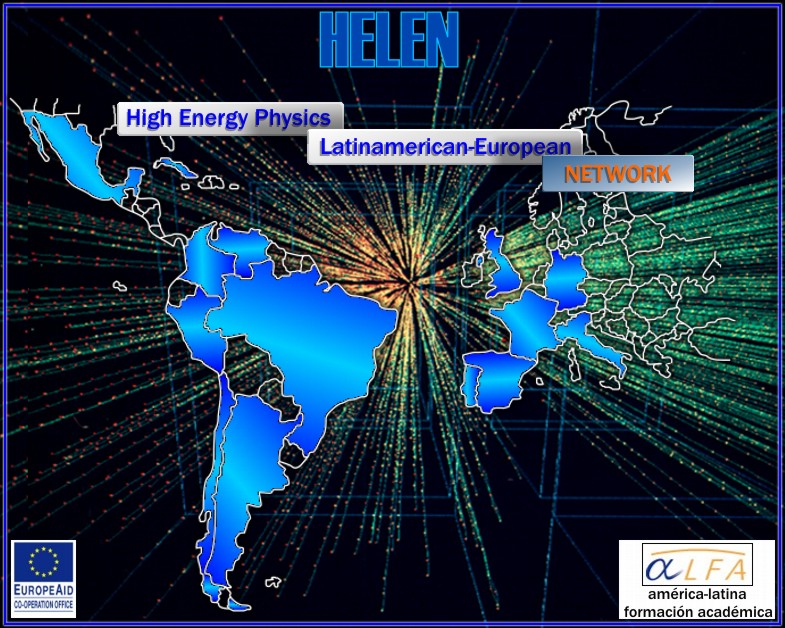How to make particle physics interesting to Latin Americans: CERN as a benchmark for global science diplomacy
 |
by: Marga Gual Soler, PhD (Georgetown University/WAYS)
and Javier Santaolalla Camino, PhD (UERJ/ CERN)
One of the central themes in discussions at the World Science Forum in Rio de Janeiro last week was how to enhance science diplomacy among nations, particularly in the context of strategies for North-South and South-South cooperation. Science diplomacy aims to create, exchange and share scientific capabilities through the integration of three historically disconnected areas: foreign policy, global development and investment in research.
Speaking of science diplomacy, a large number of speakers referred to the European Council for Nuclear Research (CERN), located near the Swiss city of Geneva. Established in 1954 under the auspices of UNESCO, the leadership and importance of CERN worldwide are measured at two levels. On one side, CERN is the world’s largest basic research laboratory and has been for more than 50 years at the forefront in particle physics research, hosting large experiments like the Proton Synchrotron, the Super Proton Synchrotron, the Large Electron Positron Collider or the most powerful accelerator in the world, the Large Hadron Collider (LHC). On the other hand, CERN is an international and intergovernmental organization constituted by 20 member states, 5 observer states and more than 40 countries that are not official members but have researchers participating in experiments, totalling over 10,000 researchers from five continents. Its international status has brought CERN to a unique position to promote the understanding among nations through scientific research. In this regard, one of CERN’s main mission is to foster international cooperation programs in research, education and outreach, which include several collaborative initiatives with Latin America.
Relations between Latin America and CERN
Relations between Latin America and CERN have grown stronger in recent years, with the addition of teams from Argentina, Brazil, Chile, Colombia, Cuba, Mexico and Peru to experimental collaborations. The creation of HELEN (American -European High Energy Physics Network) in 2005 and the ePlanet program (European – Latin American Network for Particle Physics ) in 2011 enabled scientists from many Latin American countries to visit CERN, in parallel with the already established exchange visits from CERN to the region.
Latin American researchers are increasing year after year their participation in CERN projects. These experimental collaborations have had a very positive impact in the scientific training of visiting researchers, but the scope of CERN international programs goes even further, with one of its core objectives being the popularization of science in the societies of participating countries. While some countries like Uruguay have organized virtual CERN visits via video conference, there is a mechanism still not widespread in the region to promote knowledge in particle physics and increase the scientific literacy of the population: the National Programs for Teachers.
 |
National Programs for Teachers at CERN
The Programs, initiated in 1998, consist of week-long intensive traning courses for middle school teachers at CERN, sponsored by participating governments or scientific foundations and usually delivered in the participant’s mother tongue. As part of the Program, teachers perform a wide range of scientific activities related to particle physics, accelerator engineering, superconductivity, cosmology and explore technological applications such as positron emission tomography (PET) and the world wide web . The Program also includes lectures and seminars delivered by leading scientists – from the teacher’s home country, whenever possible- as well as workshops and laboratory and classroom experiments. Teachers also participate in discussions and debates, generate new academic curriculum, visit laboratories and enjoy a complete cultural program in the city of Geneva.
The main objective of the Program is to change the model of dissemination of knowledge to strengthen the scientific culture in the countries of origin of the teachers.
The Program aims to promote scientific vocations and bring the world of physics to students worldwide through the training and motivation of their teachers, turning them into “multiplicative factors” as each transmits the knowledge and inspiration acquired to thousands of students upon return to their home countries.
Latin American participation
The Program has been hugely successful over the last fifteen years, reaching more than 6000 teachers from more than 70 countries on five continents. In countries such as Britain, Germany or Spain the program is offered on an ongoing basis, with monitoring and evaluation systems in place. However, in Latin America it has only been organized in Mexico, Chile, Ecuador and Brazil, and with unequal participation: only Brazil sent 83 of the nearly 100 participant teachers from Latin America. Given the intense level of participation, it is not surprising that Brazil has become the first Latin American country to initiate the application process for official CERN membership. Remarkably, the Dominican Republic sent for the first time last October 20 physics teachers for a week of training at CERN.
What would it take for Teachers Programs to enter or become permanently established in Latin America?
Several factors explain the imbalance in participation: geographic proximity, which directly increases the cost of travel to CERN, the level of scientific development of the participating countries, and the commitment from governments. In Latin America the higher costs are presented as the main obstacles to participation, although both the Dominican Republic and Brazil have shown that it is not insurmountable providing there is institutional support and political will. However, a continuous and stable financial support would be required to obtain sustained benefits in the long term.
A first step could be the creation of a regional network of physics teachers in Latin America, supported by governments and in collaboration with international organizations whose missions are aligned with the goals of CERN. This scheme would require less investment at the national level and enhance regional cohesion and engagement in favor of science literacy. CERN already has similar programs that could serve as models, such as the High School Teachers Program, bringing together teachers from all five continents under the patronage of UNESCO to allow participation from developing countries.
These programs may favor the decentralization of education and outreach strategies at CERN. A Latin American regional network of physics teachers would enable the adaptation of teaching methodologies to local needs, both in terms of access to technology and in terms of tools and culturally-relevant communication skills and contents. The development of such network should consider that cultural proximity is a key to motivating or alienating scientific vocations, especially for women and girls.
Mutual benefits
Not only Latin American countries would benefit from the enhanced participation of its teachers in CERN programs, but CERN would also reap the economical, scientific and social rewards derived from the collaboration. Last but not least, this is a great opportunity for Latin America to use science as a tool of diplomacy and help resolve conflicts and political tensions in the region.
On 24-27 November Rio de Janeiro hosted a new edition of the World Science Forum (WSF), which since 2003 gathers every two years leading scientists and decision-makers, as well as representatives from industry, civil society and the media, in order to discuss the contribution of science to global issues such as sustainable development. For the first time the WSF was held outside its home country, Hungary, as part of the strategy to reflect the changing global landscape of science, benefit from the contributions and achievements of emerging scientific powers and extend the impact of the Forum to other regions.

Marga Gual Soler is a biologist with a PhD in Cellular and Molecular Biology. She has collaborated with several NGOs working in international science education and literacy programs, and worked with the Economic and Social Council of the United Nations investigating mechanisms of science diplomacy from a civil society perspective. In 2014 she will coordinate a new network of young scientists in Latin America as part of a Latin American Board fellowship at Georgetown University. She is now on a scientific tour around Latin America.
Javier Santaolalla Camino is a Telecommunications Engineer and doctor in Particle Physics. He is currently a postdoctoral researcher at the State University of Rio de Janeiro and since 2008 has been part of the CMS experiment at the Large Hadron Collider at CERN. In addition to his research, he is an official guide at CERN’s visitors service and a teacher’s program coordinator. In Spain, Javier is part of the science outreach group The Big Van Theory. |
